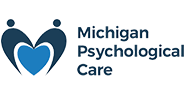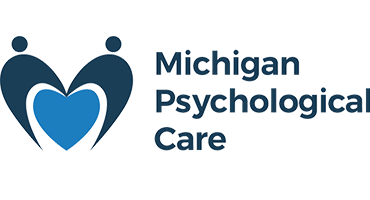Ways Therapy Can Help with SAD (Seasonal Affective Disorder)
Working with a therapist can help people navigate difficult situations and life changes. Therapy can also be used to get help for mental health disorders. Sometimes, people struggle with the idea of seeking therapy because they believe it makes them weak or that they don’t need help. But there is absolutely nothing wrong with needing extra support from time to time. Even if a person isn’t going through a difficult situation, they can still benefit from therapy.
Therapy is a powerful tool for recovering from various mental health disorders. For example, therapy can help people recover from Seasonal Affective Disorder (SAD). Seasonal Affective Disorder is a type of depression that comes into a person’s life when the seasons change. Sometimes, it can also be referred to as “seasonal depression.” In most cases, people struggle with seasonal affective disorder during the fall or winter when temperatures are colder and there is less sunlight. This is referred to as Winter-pattern SAD. However, there are some people who experience SAD during the summer months. This is referred to as Summer-pattern SAD.
Symptoms of Seasonal Affective Disorder
When someone is struggling with SAD, they will likely show similar symptoms to those of depression. Some of these include:
- Disruption of sleep patterns
- Feelings of persistent low or sad mood
- Feelings of irritability
- Feelings of hopelessness
- Difficulty concentrating
- Changes in eating habits
- Changes in weight
- Isolation from loved ones or social activities
Treatment for Seasonal Affective Disorder
There are a variety of ways to treat this disorder that can build on each other to give the person struggling the best chance at recovery. These treatment methods include:
- Light therapy (or exposure to sunlight if possible)
Exposure to sunlight or light therapy can help treat this disorder. Light therapy can help treat SAD because it helps your brain reduce the production of melatonin and increase the production of serotonin. Serotonin is a hormone that affects your mood. Light therapy can be performed either by exposing a person to sunlight or using a lightbox. Lightboxes are used to take the place of natural sunlight if this is not possible for the patient. - Medication
Antidepressant medications can be used to help people who are struggling with this disorder. These medications help regulate chemicals in our brain that are related to mood and stress. The most common form of medication used to treat SAD is selective serotonin reuptake inhibitors (SSRIs). These medications help the patient’s brain regulate serotonin levels in a person’s brain, which can improve their mood. The medication works most effectively when paired with psychotherapy. Medications also take several weeks to take effect, so they should not be the only form of treatment a patient is receiving. - Therapy
Psychotherapy can be used to help seasonal affective disorder by helping patients work through the thoughts and behaviors that might be causing their struggles. A common treatment used in therapy for SAD is cognitive behavioral therapy (CBT).
Therapy and Seasonal Affective Disorder
When treating seasonal affective disorder, it’s important to remember that a combination of the above treatments is the most effective. As we mentioned previously, therapy has the capacity to improve a person’s well-being and overall life satisfaction. Everyone’s experience in therapy will be slightly different due to the differences in each person’s struggles.
Therapy can help people struggling with SAD feel less alone. When someone is struggling with depression, they often feel alone in their struggle. Their thoughts convince them that nobody will understand and there is no way out. But this is not true. Therapy can be a safe space to remind you that you are never alone. Therapy can help educate patients on how common seasonal affective disorder can be. They may even be able to suggest group therapy or support groups based on the person’s specific needs.
Therapy can also teach patients skills that will allow them to work through their thoughts, feelings, and behaviors. This can be done through cognitive behavioral therapy (CBT). Cognitive behavioral therapy is a type of therapy that teaches how our thoughts, feelings, and behaviors are all connected. Through CBT, therapists can help patients reframe their negative thoughts that might be contributing to their seasonal affective disorder symptoms. Therapists can use CBT to teach patients how to reframe their negative thoughts into positive ones and recognize any cognitive distortions in their thinking. Therapists can educate their patients on the common types of cognitive distortions that they may recognize in their thinking.
CBT strategies can also help people gain confidence and develop resilience to help with difficult situations. Cognitive behavioral therapy can also use behavioral activation to help patients struggling with hopelessness or low motivation. Behavioral activation is a skill that slowly increases the patient’s activities they have been avoiding, often seen in the form of avoidance, isolation, and not engaging in activities that previously brought them joy. CBT therapists will help patients learn these skills so they are better equipped to handle difficult periods of their lives.
When a patient is partaking in CBT therapy, they will also learn how to manage stress more productively. Our lives are full of stress, and it is, unfortunately, an inevitable part of life. Therapists can also help patients schedule and stick to activities that are based on their values. When people partake in activities that matter to them and are meaningful, they tend to have a higher quality of life.
Another benefit of CBT is therapists can help patients identify what their triggers are and help them prevent or cope with them. This can decrease the possibility of relapse in the future. CBT can also help patients adopt other practices that may decrease the possibility of relapse. These can be exercise, staying socially connected, getting quality sleep, and eating a healthy, balanced diet.
In addition to CBT, therapists can also take on the role of accountability for the person struggling with seasonal affective disorder. When someone is dealing with depression, they often find it hard to complete tasks that they know will be helpful to them. If a person has a therapist that they trust, they may feel comfortable having their therapist keep them accountable by assigning homework or tracking symptoms.
Seasonal affective disorder is common and affects about 5% of people in the United States alone. However, the good news is that this disorder can be treated and gives people who struggle with it a chance at an improved quality of life. If you or someone you love struggles with SAD, please remember it’s not your fault that you are struggling. Recovery from this disorder and the symptoms associated with it is possible. It’s important to remember that even when dark times come, there is always the possibility to find the light again. We hope that you remember you are worth it and deserve to live a happy, fulfilled life.
If you are interested in working with a therapist or online counselor from our practice, please reach out to us here. We are eager to help you in your journey and help you live a fulfilling life.
References
https://www.nimh.nih.gov/health/publications/seasonal-affective-disorder
https://www.hopkinsmedicine.org/health/conditions-and-diseases/seasonal-affective-disorder
https://www.nhs.uk/mental-health/conditions/seasonal-affective-disorder-sad/treatment
https://www.apa.org/ptsd-guideline/patients-and-families/cognitive-behavioral
https://mhanational.org/conditions/seasonal-affective-disorder-sad
Keywords: seasonal affective disorder, mental health, CBT, online counselor [Michigan]


